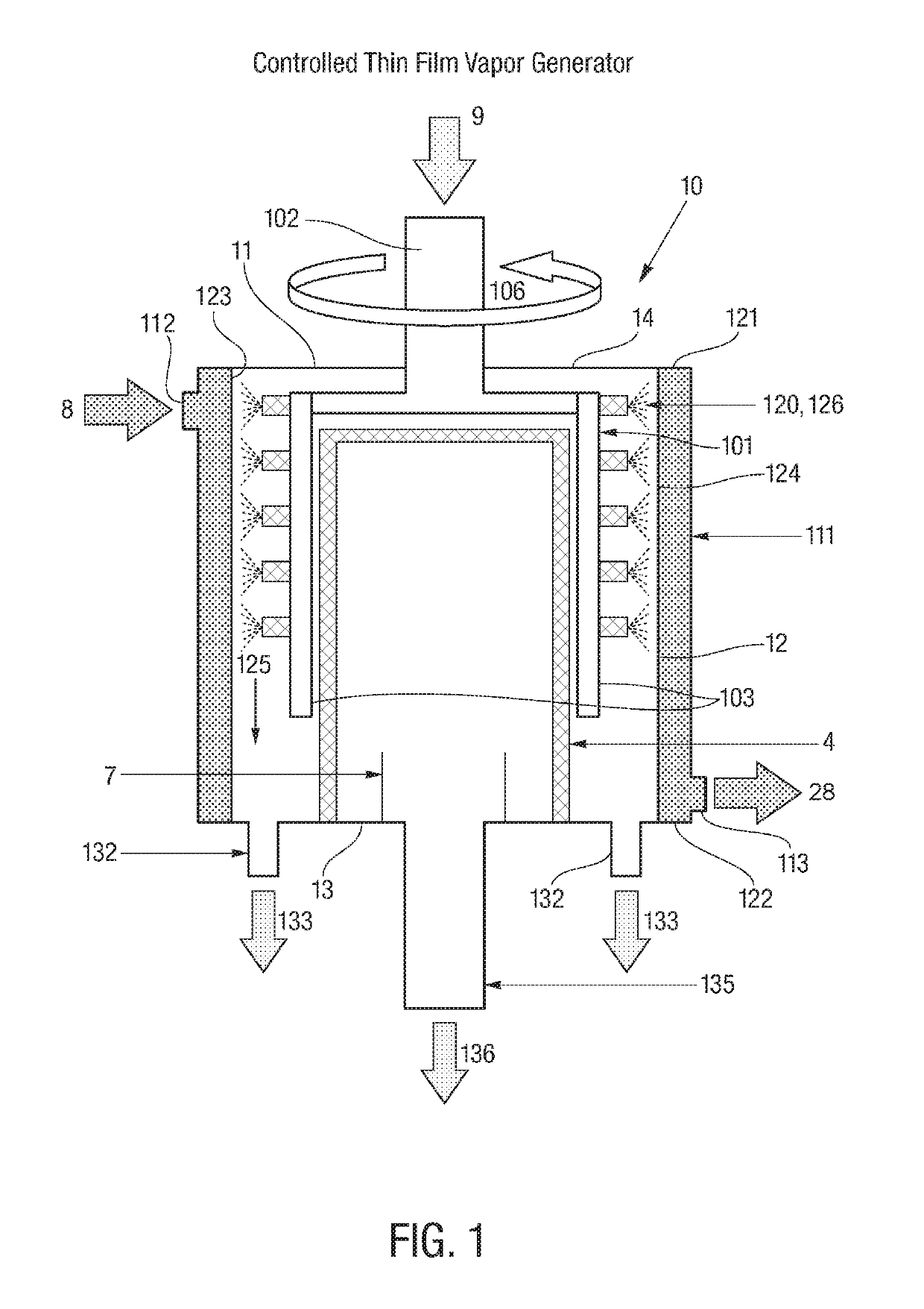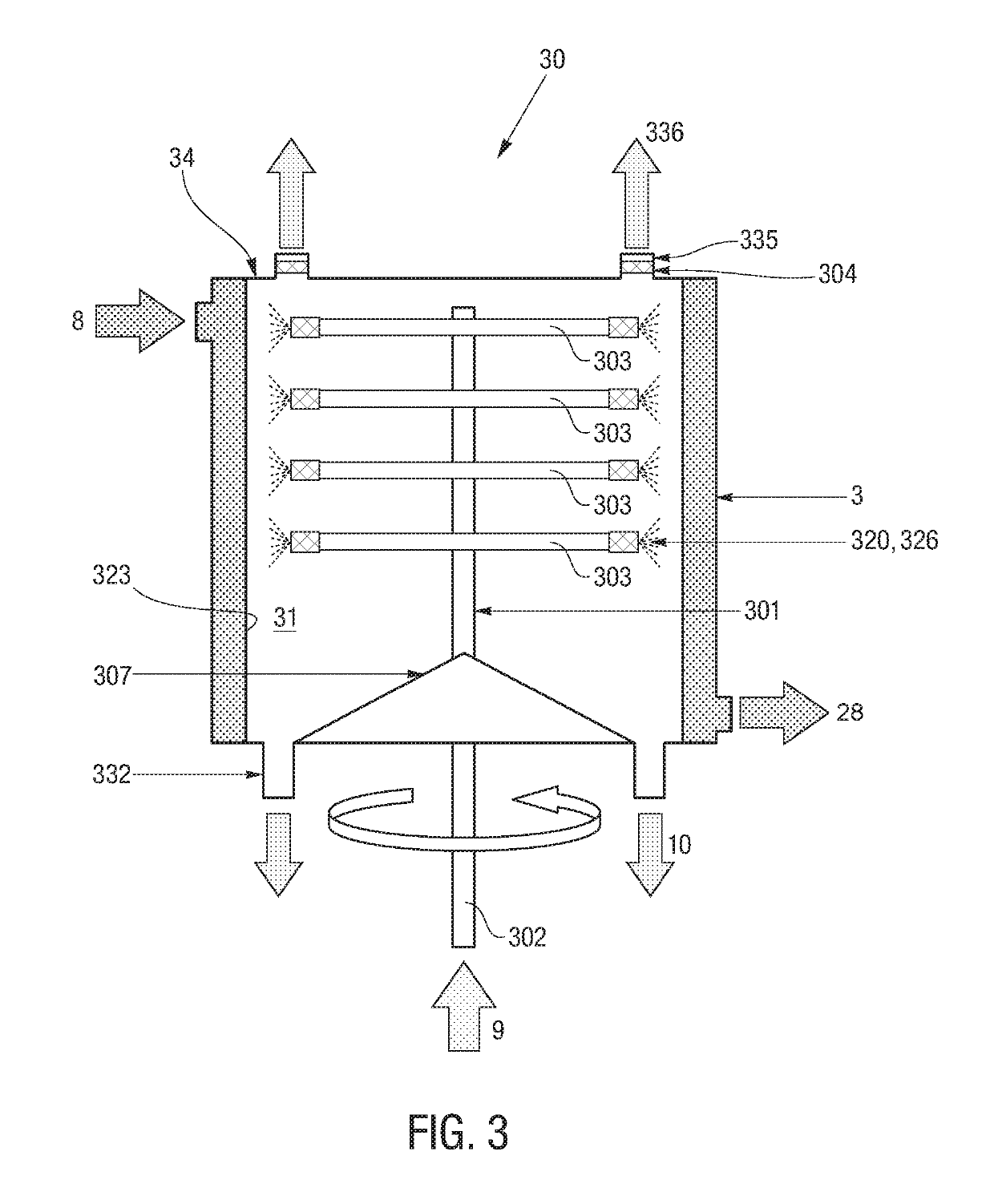Controlled thin film vapor generator for liquid volume reduction
a thin film vapor generator and liquid volume technology, which is applied in the direction of multiple-effect evaporation, waste water treatment from quaries, separation processes, etc., can solve the problems of corrosion, heat transfer surface scaling, unwanted drying and scaling about the heat transfer surface, etc., to facilitate the processing of fluids and increase the surface area for processing
- Summary
- Abstract
- Description
- Claims
- Application Information
AI Technical Summary
Benefits of technology
Problems solved by technology
Method used
Image
Examples
example i
[0117]An example is provided to further understanding to the present invention. In this example, reactor 70 is approximately 26.25 inches in diameter, giving it a footprint of approximately 3.8 square feet. Processed fluid enters through a 1 to 2 inch diameter fluid inlet 702 and exits through a 3 inch diameter reject outlet 734. Evaporation from the fluid being processed exits through three evaporation outlets 742, each about 4 inches in diameter. Steam enters through three steam inlets 75, each about 4 inches in diameter, and condensate formed from the steam during processing exits through a 3 inch diameter outlet 755.
[0118]Reactor 70 includes four concentrically arranged vessels 71a-d, each about 66 inches in height except for the outermost vessel, which is 72 inches in height. Outermost vessel 71a includes an inner heat exchange surface 723a, and vessels 71b-d internal thereto each include inner and outer heat exchange surfaces 723b-d, 724b-d, respectively, for a total of seven ...
PUM
| Property | Measurement | Unit |
|---|---|---|
| width | aaaaa | aaaaa |
| width | aaaaa | aaaaa |
| thickness | aaaaa | aaaaa |
Abstract
Description
Claims
Application Information
 Login to View More
Login to View More - R&D
- Intellectual Property
- Life Sciences
- Materials
- Tech Scout
- Unparalleled Data Quality
- Higher Quality Content
- 60% Fewer Hallucinations
Browse by: Latest US Patents, China's latest patents, Technical Efficacy Thesaurus, Application Domain, Technology Topic, Popular Technical Reports.
© 2025 PatSnap. All rights reserved.Legal|Privacy policy|Modern Slavery Act Transparency Statement|Sitemap|About US| Contact US: help@patsnap.com



